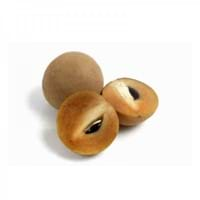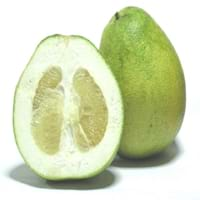Health Benefits
Anti-inflammatory properties, Arthritis treatment, Regulates Blood Sugar, Unknown
Cancer prevention, Heart care, Prevents Urinary Tract Infection
General Benefits
Boosts immune system, Controls blood sugar levels, Digestive aid
Digestive aid, Fights against infections, Flu treatment, Healing of wounds, Helps in weight loss, Treatment of common cold
Skin Benefits
Nourishes skin, Protects skin from oxidative stress
Anti-aging benefits, Brightens and lightens complexion
Hair Benefits
Prevents hair loss, Promotes longer and healthier hair, Regulates hair growth
Promotes longer and healthier hair, Protects hair
Allergy Symptoms
Asthma, Red rash, Swelling of mouth, tongue or lips
Abdominal cramps, Abdominal pains, Diarrhea, Lightheadedness, Nasal congestion, Nausea, Swallowing difficulties, Swelling of mouth, tongue or lips, Vomiting
Side Effects
Diarrhoea, Vomiting
Allergic reaction, Dizziness, Stomach pain
Best Time to Eat
As a snack in the late afternoon
As a snack in the late afternoon, Don't consume at night and before bed, Eat the fresh ones, avoid mixing with any other foods, don't eat after meal., Morning time (before lunch)
Vitamin A (Retinol)
Not Available
Vitamin B5 (Pantothenic Acid)
Not Available
Vitamin B9 (Folic acid)
Not Available
Vitamin C (Ascorbic Acid)
Calories in Fresh Fruit with Peel
Calories in Fresh Fruit without Peel
Not Available
Not Available
Calories in Frozen Form
Not Available
Calories in Canned Form
Not Available
Calories in Juice
Not Available
Calories in Pie
Not Available
Type
Berry
Citrus, Tropical
Season
Winter
All seasons
Varieties
Bush Table Queen, Heirloom Table Queen, Festival Hybrid, Early Acorn Hybrid, Table Ace, Ebony and Cream of the Crop
Chandler, Cocktail, Cuban Shaddock, Hirado Buntan, Honey, Jaffa Red, Mato Buntan, Pomelit, Reinking, Siamese Sweet and Sweetie
Seedless Variety
Not Available
No
Color
Dark green, Green-yellow, Orange green
Green, Pink, Red, Yellow
Inside Color
Not Available
Creamy Yellow
Taste
Sweetish
Juicy, Sweet
Origin
Central America, North America, Unknown
Malaysia, South-Eastern Asia, Thailand
Soil Type
Well-drained
Clay, Loam, Sandy
Climatic Conditions
Cold, Sunny
Warm
Facts about
- It was named as Acorn Squash for its resemblance to a large ribbed acorn.
- It is said that squash was being grown in Mexico as long as 10,000 years ago.
- It was the first food cultivated by native American Indians.
- Flowers of pomelo fruit are used to make perfumes.
- Pomelo tree wood is used for the manufacture of tool handles.
- Life of pomelo tree is around 10 years.
- Height of pomelo can be 15-20 feet.
Spirits
Not Available
Yes
Cocktails
Not Available
Yes
Other Countries
Egypt, India, Iran, Italy, Mexico, Russia, Turkey, Ukraine, United States of America
Argentina, India, Israel, Mexico, South Africa, Sudan, Thailand, Turkey, United States of America
Top Exporter
India
United States of America
Botanical Name
Cucurbita Pepo
Citrus maxima
Synonym
Winter Squash
Citrus grandis
Subkingdom
Tracheobionta
Tracheobionta
Division
Magnoliophyta
Magnoliophyta
Class
Magnoliopsida
Magnoliopsida
Subclass
Dillenhidae
Rosidae
Order
Cucurbitales
Sapindales
Family
Cucurbitaceae
Rutaceae
Generic Group
Not Available
Citrus fruit
Difference Between Sapota and Pomelo
We might think that Sapota and Pomelo are similar with respect to nutritional value and health benefits. But the nutrient content of both fruits is different. Sapota and Pomelo Facts such as their taste, shape, color, and size are also distinct. The difference between Sapota and Pomelo is explained here.
The amount of calories in 100 gm of fresh Sapota and Pomelo with peel is 40.00 kcal and 38.00 kcal and the amount of calories without peel is Not Available and Not Available respectively. Thus, Sapota and Pomelo belong to Low Calorie Fruits and Low Calorie Fruits category.These fruits might or might not differ with respect to their scientific classification. The order of Sapota and Pomelo is Cucurbitales and Sapindales respectively. Sapota belongs to Cucurbitaceae family and Pomelo belongs to Rutaceae family. Sapota belongs to Cucurbita genus of Pepo species and Pomelo belongs to Citrus genus of C. maxima species. Beings plants, both fruits belong to Plantae Kingdom.









